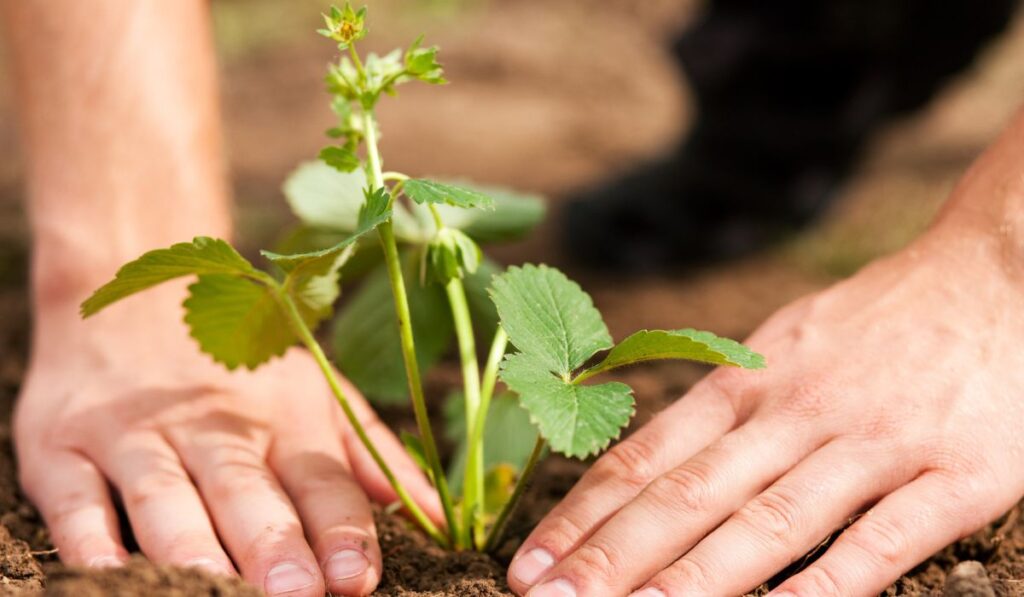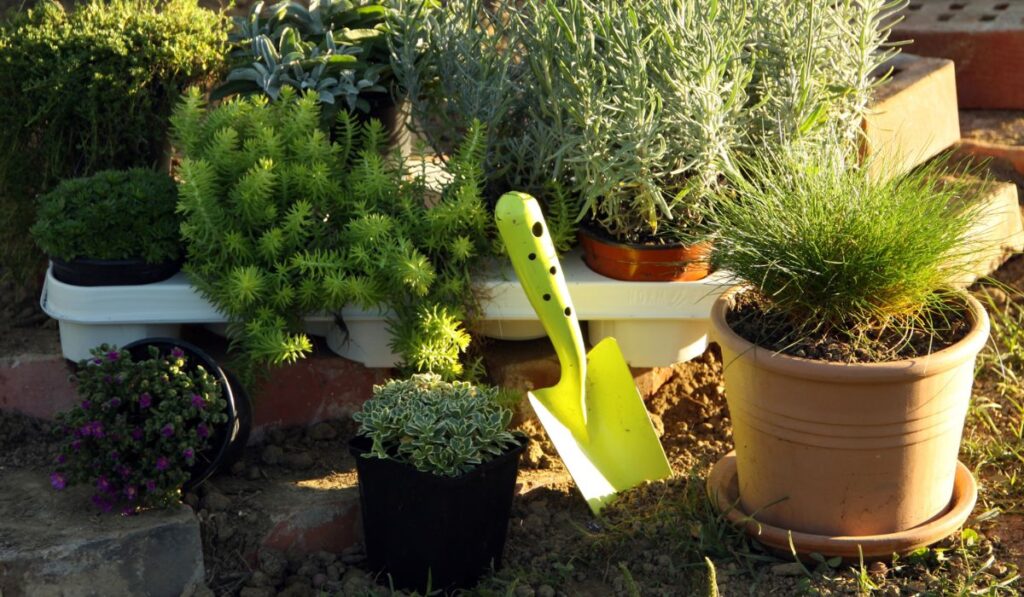Gardening can be a therapeutic and fun summer activity that also produces some very tasty food — at least if you’re successful! But before you rush out and start a garden it’s important to consider when the best time to plant a garden is.
The best time to plant a garden varies based on the region where you live. Most flowers and herbs do best when planted after the first frost, which is in late February in many states. In some regions, you’ll need to plant certain plants, like fruit trees, much earlier than that.
Let’s take a closer look at the time of year you should plant each type of plant and how to adjust for different plants in your specific region.
When’s the Best Time to Plant a Garden?

Knowing the right time to plant a garden is a bit of an art. Not only do you need to consider how long the plants need to grow, but you also need to take your local climate into consideration.
For most gardeners located in the United States, the best time to plant a garden regardless of what you plan to grow is actually in February, as this will give plenty of time for your crops to grow and flourish before the first frost of the following calendar year.
In general, you want to plant after the last frost of winter at the absolute earliest, since a cold snap will kill weak, unestablished plants.
Just hold off on planting your Brussels sprouts and other hardy greens since these actually need the fall frost in order to develop flavor.
The only exception to these rules is if you live somewhere especially cold, like Minnesota or Detroit, where the ground is too hard to plant so early, or in Colorado, where large snow storms are still expected. In this case, start your seedlings indoors in February and then transfer them outdoors once it’s a bit warmer.
Planting Seeds Indoors vs. Outdoors
Although you may be ready to start growing your entire garden in your home while it’s still cold, don’t buy the seeds just yet. Some plants actually do better when planted outdoors from the start.
Generally, flowers do best when planted directly outdoors, while most fruits and vegetables will flourish when you start them indoors.
For a more complete idea of which plants need to start indoors with you in the winter, find the first frost day for your state in the fall as well as the last one in the winter. This gives you the time period you can keep plants in the ground alive where you live.
Then, look at the growing season length of everything you plan to plant. Anything with a growing season that will have it in the ground outside of those dates will need to start with you indoors before the last frost of the spring.
Flowers, Herbs, or Fruits?
It can be tempting to plant your entire garden in one weekend, but be aware that different types of plants should actually be planted at different points in the growing season.
Flowers
Flowers are best planted after the last frost of the spring, whenever that may be for your region. Some plants, like pansies, will survive a light frost, so these can be planted a few days earlier, but for flowers, it’s best, as a general rule, to wait until frost is done for the season.
Herbs
Herbs are best planted as started plants, meaning you either need to buy them that way or start them in your kitchen. Seedlings can generally be transferred into the ground after the last spring frost.
To have your herbs ready to transfer in time, you’ll want to begin growing them in your home 3 to 4 weeks before the end of the frost.
Fruits
Surprisingly, fruits are some of the earliest plants you can plant in your garden. Fruit trees can be planted as early as 6 weeks before the final spring frost.
For ground fruits like watermelon, it’s best to start these as seedlings indoors and transfer them to the ground after the last frost of the season.
How to Plant a Garden (Step-By-Step)

Now that you know when to plant a garden, it’s time to take a look at how you should do it. Follow the steps below for the best results.
1) Pick A Location
First, decide where you will plant your garden. Somewhere sunny with good soil is usually the best choice.
2) Decide What You Will Plant
Once you have the space, take a look at what you want to grow. Some plants need raised beds, others need partial shade, and some need plenty of room for their roots. Make a map of your garden space with where you plan to plant each plant.
3) Gather Supplies
Next, you’ll need to gather your gardening supplies, including the seeds or seedlings you plan to plant.
4) Prepare the Soil
Remove any rocks and debris from your garden area. Dig down at least a foot (maybe more depending on what you plan to plant), mixing the soil with fertilizer.
5) Time Your Planting
As we learned above, not everything can go into the ground at the same time. Check the frost dates and coordinate your planting with the final frost of spring in the state you live in. Some seeds may need to be started indoors.
6) Sow Your Seeds
When the time comes, dig holes for your seeds, leaving enough space for the plants to grow. Transfer seedlings or seeds into these holes and cover them with soil.
7) Water…A Lot!
Right after you finish the planting, give your gardening a good watering. This will help the seeds start to grow! Use a simple hose spray handle like this one (on Amazon) or an oscillating sprinkler (also on Amazon) to cover larger areas.
Don’t flood the place, but if it’s hot out and there hasn’t been much rain, you are the one who needs to make sure your plants get enough water to survive and thrive.
Tips for Maintaining Your Garden
You’ve got your garden planted, but the work isn’t over yet! Gardening is hard work that lasts all season long. Here are some tips to help you maintain your garden.
- Pull weeds at least once per week.
- Keep your garden moist.
- Be on the lookout for insects or plant rot.
- Treat your soil with fertilizer every 3-4 weeks.
- Remove dead stems and leaves from your plants on a regular basis.
- Protect your plants from animals.
- Stake plants if they begin to bow.
If you follow all of these tips, chances are you will have an amazing-looking garden by mid-summer!
Final Thoughts
Knowing when to plant is one of the secrets to having a beautiful and fruitful garden! As long as you take the time to plan your garden properly — and to plant it at the right time for your region — you should have no problem getting plants to grow and prosper.
Don’t forget to take into account that some plants need to be planted earlier or later in the season due to the length of the growing season.
